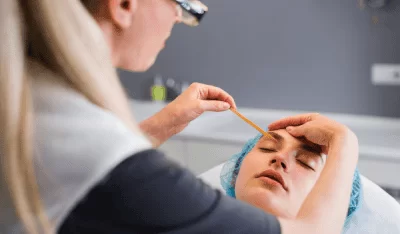Hair typically takes about 3 to 6 weeks to grow back after waxing. Several factors, such as the stage of the hair growth cycle, genetics, and skincare routines, can influence how long it takes for hair to regrow and its appearance. Proper post-waxing care can aid in healthy regrowth cycles. Different hair growth stages impact regrowth time, while genetics and hormones affect regrowth rate. Consistent waxing can eventually lead to finer regrowth over time. Moreover reliable waxing specialists in Vienna recommends exfoliating regularly, moisturizing daily, and using appropriate skincare products can help prolong the skin’s smoothness.
Hair Growth Cycle Basics
Understanding the basics of the hair growth cycle is essential for comprehending the process of hair growth after waxing. The hair growth cycle has three phases: anagen, catagen, and telogen. During the anagen phase, hair actively grows from the follicle. Depending on genetic factors and body location, this phase can last anywhere from two to seven years. After the anagen phase, the catagen phase begins, signaling the end of active hair growth. This shift phase lasts for about two weeks. Finally, the telogen phase is a resting period where the old hair is released, and new hair begins to form. This phase lasts around three months before the cycle restarts with the growth of a new hair.
When hair is waxed, the entire hair follicle is removed, disrupting the growth cycle. As the hair follicle begins to heal, the cycle restarts, and new hair grows. Understanding this cycle helps explain why waxed hair takes time to grow back.
Factors Affecting Regrowth Time
Factors influencing the time it takes for hair to regrow after waxing can vary depending on individual characteristics and hair removal practices. One key factor is the hair growth cycle stage at the waxing time. Hair is most effectively removed during the anagen phase when it is actively growing, leading to a longer time before regrowth. Moreover, the density and thickness of hair, which can be influenced by genetics, hormonal imbalances, and certain medical conditions, play a role in determining how quickly hair regrows after waxing.
The frequency of waxing sessions also impacts regrowth time. Regular waxing can lead to thinner and sparser hair regrowth over time. Skin health and exfoliation practices can further influence regrowth time by affecting the hair follicles’ ability to produce new hair. Proper post-waxing care, such as moisturizing and avoiding harsh chemicals, can help maintain healthy hair regrowth cycles. By understanding these factors, individuals can better manage and predict the regrowth time after waxing sessions.
Average Time for Hair Regrowth
The average time for hair regrowth post-waxing can vary depending on individual factors such as hair growth cycle stage, hair density, frequency of waxing sessions, and skincare practices. Generally, hair regrowth after waxing is noticeable within 3 to 6 weeks. This timeframe aligns with the typical hair growth cycle, which consists of three main stages: anagen (active growth), catagen (transition), and telogen (resting or shedding). The speed of hair regrowth can also be influenced by genetics and hormonal factors, which significantly determine the rate at which hair grows back.
Furthermore, the hair density in the waxed area can impact how quickly regrowth becomes visible. Areas with thicker hair may show regrowth sooner than areas with finer hair. In addition, the frequency of waxing sessions can affect the overall regrowth time. Consistent waxing over time can lead to finer regrowth and potentially slower regrowth rates. Proper skincare practices, such as exfoliation and moisturizing, can also contribute to a smoother and potentially slower regrowth process.
Tips for Prolonging Smoothness
Incorporating regular exfoliation into your skincare routine is essential to maintaining smooth skin after waxing. Exfoliating helps prevent ingrown hairs by removing dead skin cells that can clog hair follicles. Aim to exfoliate 2-3 times a week, using a gentle scrub or exfoliating glove to slough off the top layer of skin. This will also help new hair grow back without obstruction, promoting smoother skin.
Moisturizing daily is another crucial tip for prolonging smoothness post-waxing. Keeping your skin hydrated can help reduce friction as new hair grows, minimizing the chances of hairs getting trapped under the skin. Opt for a lightweight, non-comedogenic moisturizer to prevent clogged pores.
Additionally, consider using products containing ingredients like salicylic acid or tea tree oil, which are known for their anti-inflammatory and antibacterial properties. These can help soothe the skin post-waxing and prevent potential infections. Consistent skin care practices like exfoliation and moisturizing can contribute to smoother, hair-free skin for longer periods between waxing sessions.
Other Waxing Tips:



